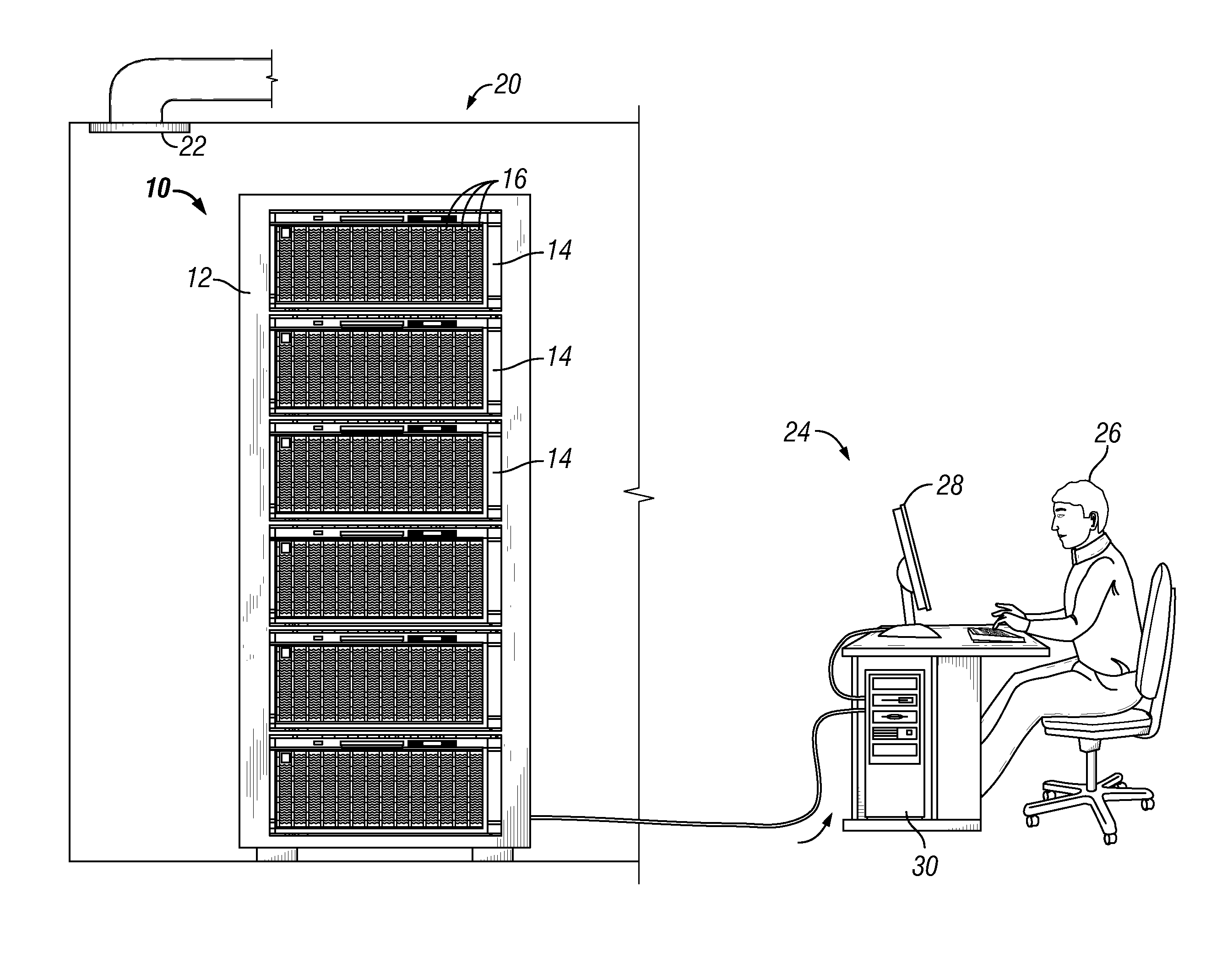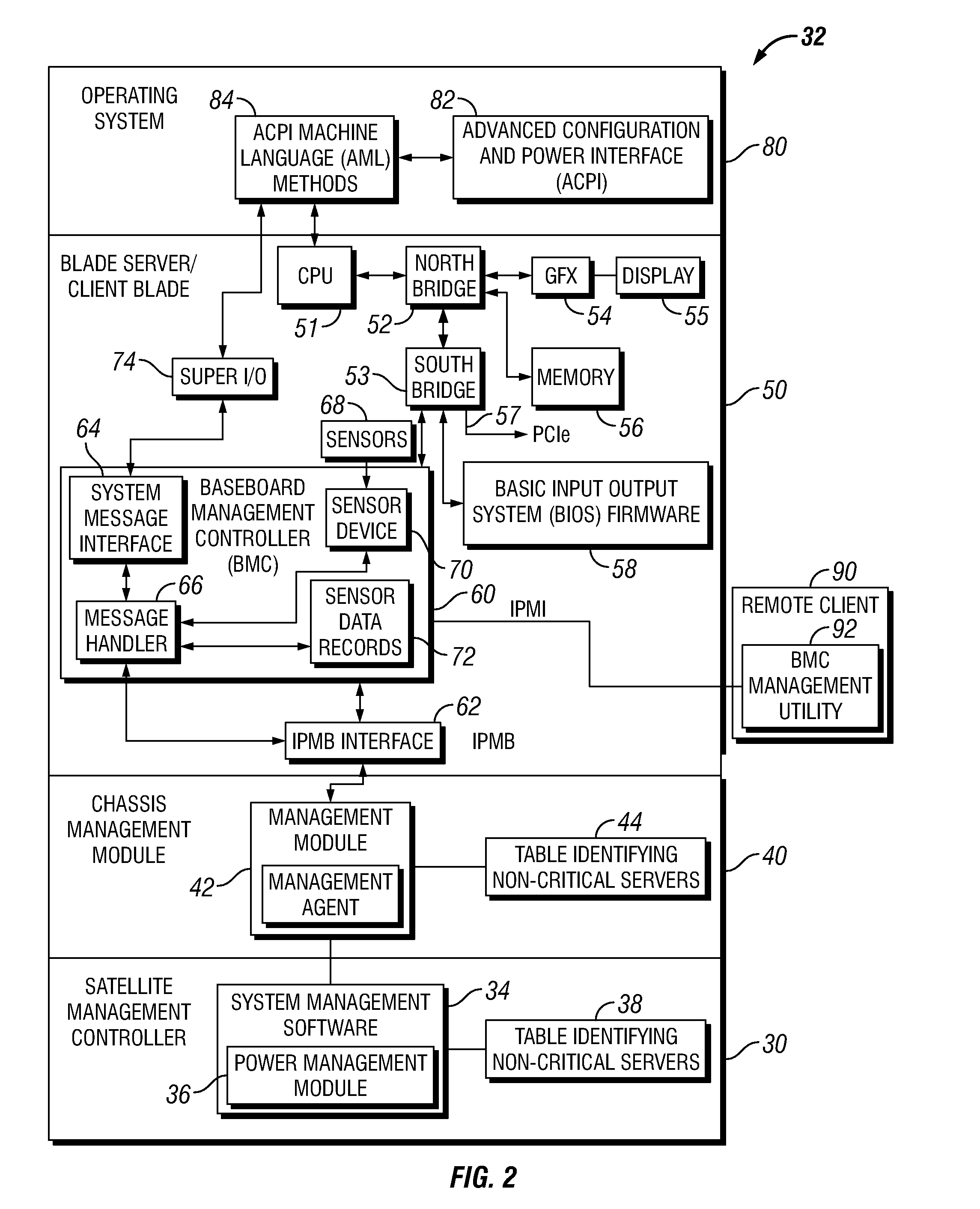Power control of servers using advanced configuration and power interface (ACPI) states
a technology of advanced configuration and power interface, applied in the field of power management, to achieve the effect of reducing the speed of at least on
- Summary
- Abstract
- Description
- Claims
- Application Information
AI Technical Summary
Benefits of technology
Problems solved by technology
Method used
Image
Examples
Embodiment Construction
[0021]The present invention provides improved systems and methods for managing power consumption and / or temperature in a processing system having multiple components or devices, such as in a multi-server computer system. Embodiments of the invention are particularly suitable for management of power in rack-based computer system, such as blade server systems and in data centers. The invention includes methods for dynamically controlling the devices to achieve a desired power consumption or temperature.
[0022]One embodiment of the invention provides a method of managing the amount of power consumed by a plurality of blade servers within a processing system. The method comprises identifying at least one of the plurality of blade servers that is not critical to maintain in a working state. Preferably, a system administer will determine which blade servers or servers are not critical and input this information into a table, so that this information can be accessed at any time and automati...
PUM
 Login to View More
Login to View More Abstract
Description
Claims
Application Information
 Login to View More
Login to View More - R&D
- Intellectual Property
- Life Sciences
- Materials
- Tech Scout
- Unparalleled Data Quality
- Higher Quality Content
- 60% Fewer Hallucinations
Browse by: Latest US Patents, China's latest patents, Technical Efficacy Thesaurus, Application Domain, Technology Topic, Popular Technical Reports.
© 2025 PatSnap. All rights reserved.Legal|Privacy policy|Modern Slavery Act Transparency Statement|Sitemap|About US| Contact US: help@patsnap.com



